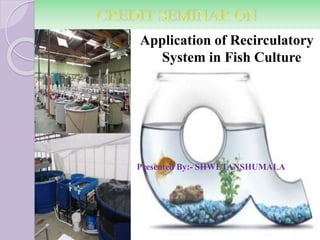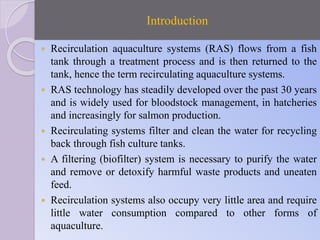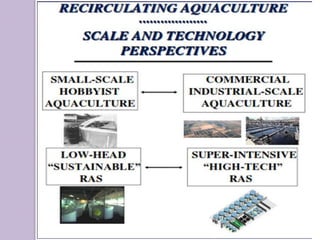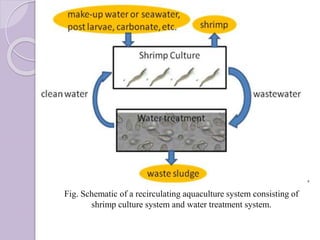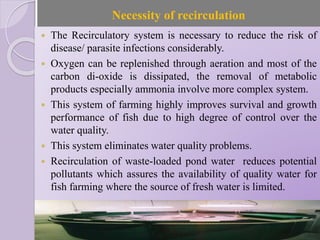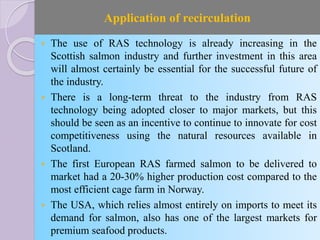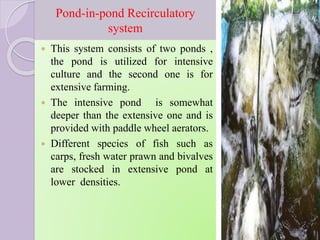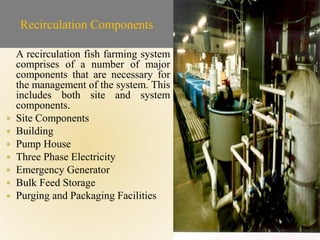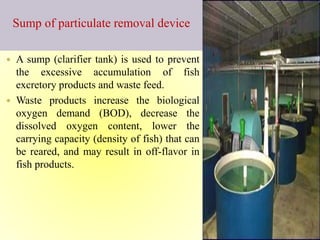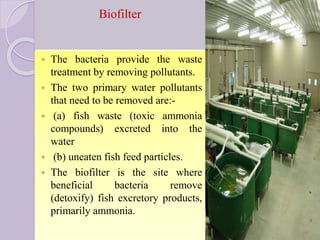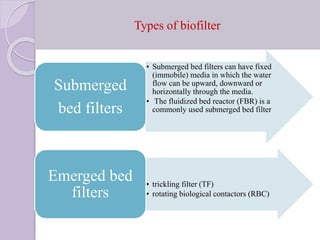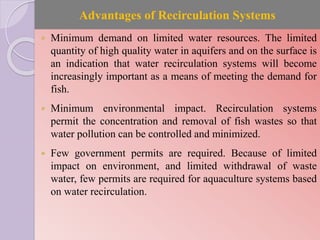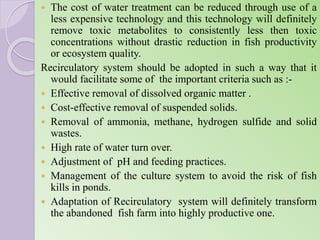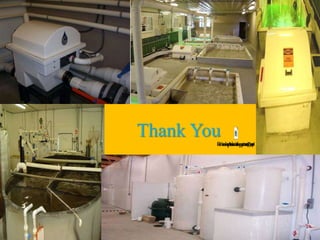The document discusses the application of recirculating aquaculture systems (RAS) in fish farming. RAS filter and recycle water from fish tanks through a treatment process before returning it to the tanks. This allows for high fish stocking densities while using little water. Key components of RAS include fish tanks, mechanical and biological filtration to remove waste, and oxygenation. RAS provide environmental and production benefits over other systems but also have higher capital and operating costs due to the water treatment infrastructure required.
